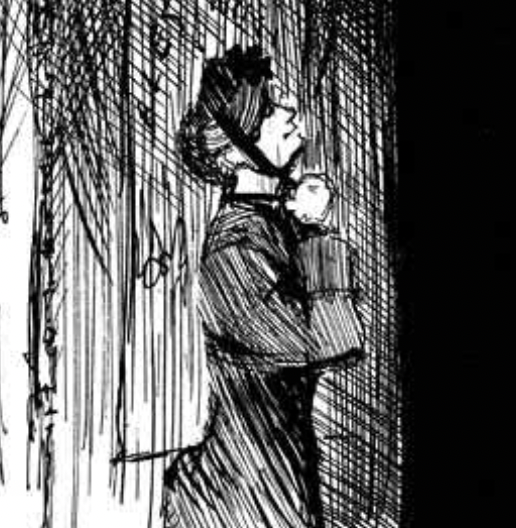click for article text
Eggs of the spotted lanternfly, an invasive insect so destructive that New Yorkers were instructed to kill any on sight, were found for the first time in California on a 30-foot-tall metal art installation headed to the Bay Area.
The lanternfly egg masses were found at the Truckee Border Protection Station in late March, the California Association of Winegrape Growers announced on Monday. According to CAWG, station staff found 11 “viable egg masses” on a large metal art sculpture that was en route to Sonoma County from New York.
Upon finding the eggs, staff rejected the shipment and sent it to Nevada, where officials discovered 30 more egg masses on other parts of the sculpture. The installation was then power washed with detergent and sent to Sonoma County under a warning hold notice. Sonoma County staff found an additional three egg masses during another inspection in which cranes were used to take the sculpture apart. The inspection was concluded after staff were sure no egg masses were left on the sculpture, according to CAWG.
The incident marks the first time spotted lanternfly eggs have been found in California. The insect presents enough risk to local plants and crops that the California Department of Food and Agriculture developed an action plan last year in the event of the bugs showing up in the state, which would include deploying an emergency response from the department and initiating an eradication authority in all counties where the insects are found.
Native to parts of China, India and Vietnam, the spotted lanternfly was first spotted in the U.S. in 2014, when it was found in Pennsylvania. It feeds on myriad plant species and causes serious damage to both plants and crops, particularly vineyards, which makes the prospect of the insects arriving in Sonoma County especially precarious. Spotted lanternflies caused “considerable, often catastrophic, damage” to vineyards after traveling to South Korea and Pennsylvania, according to CDFA.
Spotted lanternflies have “the potential to affect the entire winegrape industry,” CAWG wrote in its press release.
If additional egg masses made it into the state undetected, live spotted lanternflies may be hatching in the coming weeks, CAWG said. The insect experiences peak population growth in the late summer to early fall.
“This is essentially a public service announcement to raise awareness of how to identify a spotted lanternfly and the immediate action to take if discovered,” CAWG President Natalie Collins said in the release. “Spotted lanternflies have been found in 18 states and have proven to pose a serious threat to vineyards. These invasive insects feed on the sap of grapevines, while also leaving behind a sticky honeydew residue on the clusters and leaves. Their activities stress the plants, decrease vine health, and in some cases, can lead to plant death.”
Spotted lanternflies look different at various life stages, with the adults appearing tan-gray in color with black spots. CDFA recommends inspecting plants, trees, vehicles and trailers for egg masses or other signs of the bug, and reporting suspected findings to the CDFA pest hotline.
all that hype made me think "man these things must pose a major threat to important plant life!" only for me to get hit by
Spotted lanternflies have “the potential to affect the entire winegrape industry,” CAWG wrote in its press release.
not my treats!!!!
TBF they threaten much more critical crops than wine grapes. That’s just the big thing in the Bay Area being so close to Napa Valley.
Their first choice are grapes and walnuts, almonds are also on the list. Tbf I wouldn't be devastated with those industries getting wiped out in California with how much water they require.
grapes and walnuts, almonds
critical support to comrade lanternfly
Aren’t wonderful pistachios also grown in California? I remember they had some connections with the military to monopolize the industry and cut out middle eastern producers (Iran)
Yeah California accounts for about half of the worlds supply, about 40% for walnuts and I think 80% for almonds. Also one of the main reasons for why most of the state will probably be a semi-arid region in the next couple decades because they're pumping water out of ground tables far faster than it can replenish and growers keep expanding their orchards because there's a ton of money in it.
just get a job somewhere else lmao
no, jokes aside truly that would suck. i have some friends in the valley who work in wine, but i think they'd just transition to cannabis at that point.
i wondered if the greater agriculture industry would be affected in as dire a manner as they are implying the wine industry would. but they don't say that, they just say wine, so lmao byebye sippy sip alkie gwape juice
Stone fruits are also affected
Invasive pests are bad, full stop. We dont need to be contrarian on everything.
for legal reasons: all contrarian attitudes i've expressed in this post are sarcastic, i don't actually want an invasive pest to spread
good thing we don't live on a continent full of invasive humans farting 10 millennia of methane into the atmosphere every year
How is it possible that this is only the first confirmed sighting of a white person in California?
But yeah, this is not good for agriculture.
Damn, my months of individual jihad couldn’t save you guys.










